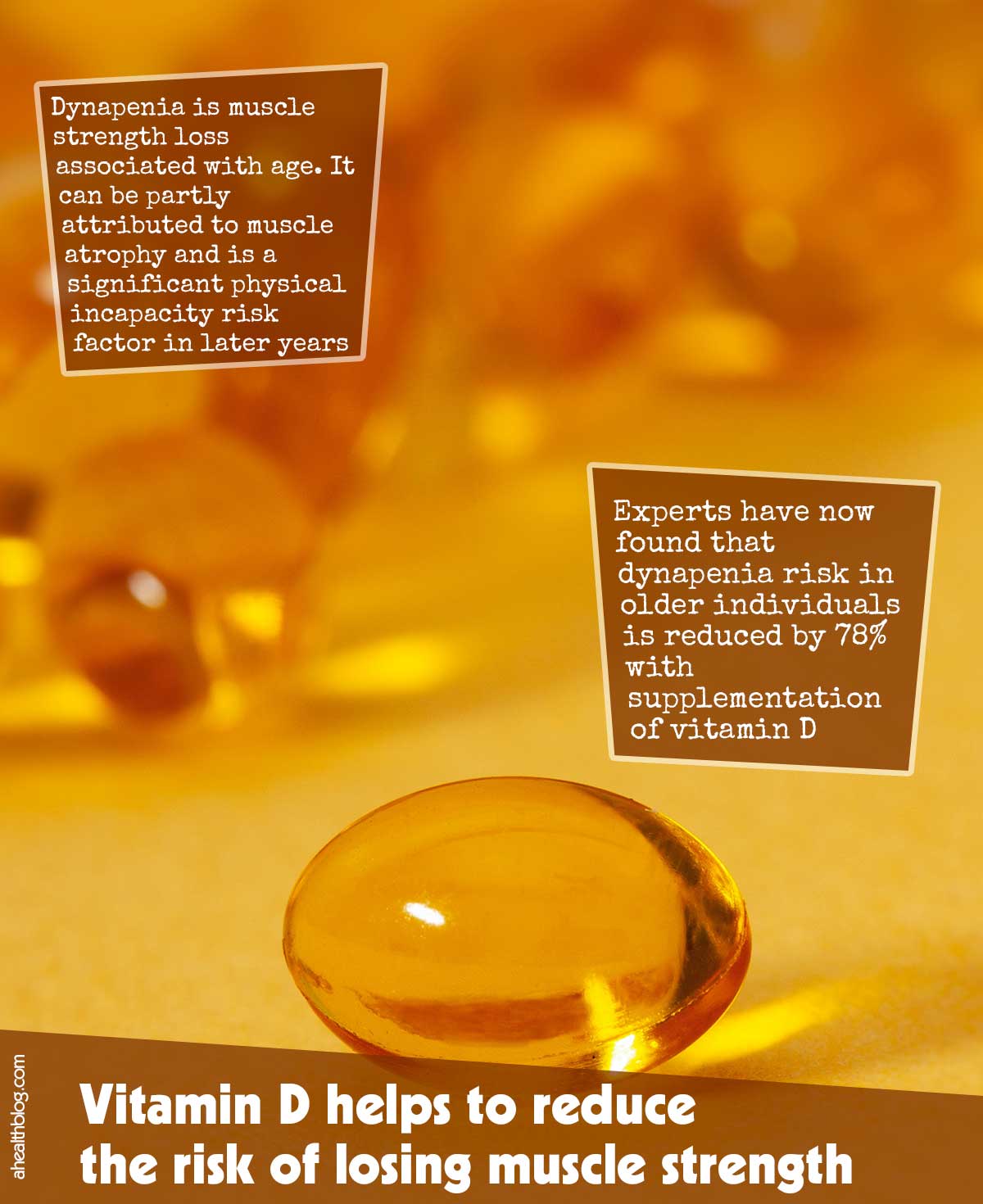Vitamin D plays a significant part in regulating the absorption of phosphorus and calcium. It also assists in keeping the immune system and brain functioning. Experts have now found that dynapenia risk in older individuals is reduced by 78% with supplementation of vitamin D.1✅ JOURNAL REFERENCE
DOI: 10.1007/s00223-022-01021-8
Dynapenia is muscle strength loss associated with age. It can be partly attributed to muscle atrophy and is a significant physical incapacity risk factor in later years. Individuals with dynapenia are more prone to falling, hospital visits, premature institutionalization, and death.
Data were analyzed for 3,205 people without dynapenia aged 50 and older who were observed for 4 years in a long-term study known as the English Longitudinal Study of Ageing.
Vitamin D is essentially a hormone known to be involved in various functions and its numerous roles include helping with muscle repair and calcium release for kinetic muscle contraction. So it was expected to result in muscle changes of some kind, which is precisely what the study demonstrated.
Muscle and bone tissue are also interconnected biochemically and not just physically and mechanically. Endocrine disorders like vitamin D insufficiency or deficiency can result in bone mineral density loss and also a decrease in muscle mass, function, and strength.
The study participants consisted of dynapenia-free men and women aged 50 and older. Grip strength, which is regarded as a good overall muscle strength proxy, was 16 kg and over for women and 26 kg and over for men.
The primary conclusion was that vitamin D deficient people, determined as blood levels under 30 nanomoles/liter, had a 70% increased dynapenia risk by the end of the 4 years in comparison to individuals with normal vitamin D levels, determined as over 50 nanomoles/liter.
This is a significant result as it indicates that a deficiency in vitamin D increases muscle weakness risk by 70%. But, because it’s known there are many cases of individuals with osteoporosis taking vitamin supplements, it was necessary to measure the efficacy of supplementing with vitamin D.
When people taking vitamin D and those with osteoporosis were excluded from the analysis, it was revealed that the risk of muscle weakness developing by the end of the 4 years was 78% higher for individuals who were vitamin D deficient at the beginning of the study compared to for individuals with normal levels of vitamin D and 77% higher for individuals with a 30 to 50 nanomoles/liter vitamin D insufficiency.
The results demonstrated that the risk of muscle weakness is increased by both vitamin D insufficiency and deficiency. The study results suggest that it’s important to take vitamin D if you have an insufficiency or deficiency.
The study analyzed data for individuals who are living in the UK and although there are many more days of sunlight in Brazil each year, they are known to have a high incidence of vitamin D insufficiency and deficiency, particularly among older individuals, and this is the case throughout the world.




